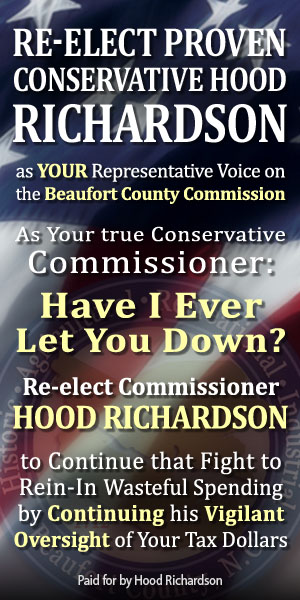Boldly Committed to Truth Telling in the False Face of Fakery
A Time to Heal
While it may have appeared that Walter Cronkite, and the fashionable antiwar effort had the best interest of our young soldiers at heart, the converse was true. In any group effort, these idealism desired is often replaced by the cross purpose of unambiguous ambition, and the antiwar was no different. The soldiers, who valiantly turned back the advancing tsunami of North Vietnamese regulars and Vietcong in the Tet Offensive would come home to no hero’s welcome . Sadly, many of these young heroes would, alternately, be stopped by some stupefied hippie, possibly, with “a flower in their hair,” and be called a “baby killer.”
Imagine fighting night and day to protect your position, your person, and your buddies’ lives in one of the most audacious battles in American history only to come home to American soil, and be spit on by dazed hippies and called a “baby killer.” It wasn’t that these returning soldiers were thin skinned, its just that they had endured so much in a war that President Lyndon Johnson was ill-prepared to win, and the last remarks they needed to hear, upon their return, were words in effect similar to the demeaning and infamous “baby killer” comment.
 50 caliber automatic weapon, manned by Bill Shavender, atop the armored personnel carrier during the Tet Offensive: Above. The dead bodies of the Vietcong and NVA that eventually littered the Vietnam landscape as the tide eventually turned for the American Army and Marines in the Tet: Below. Pictures provided by Bill Shavender, scanned by BCN to be presented digitally for the first time on the internet.
50 caliber automatic weapon, manned by Bill Shavender, atop the armored personnel carrier during the Tet Offensive: Above. The dead bodies of the Vietcong and NVA that eventually littered the Vietnam landscape as the tide eventually turned for the American Army and Marines in the Tet: Below. Pictures provided by Bill Shavender, scanned by BCN to be presented digitally for the first time on the internet.

With little thanks and even less refuge in their homeland, these soldiers did not come home to any heroes’ welcome. Just the aforementioned opposite, and it affected these young warriors beyond all available comprehension. Post-traumatic Stress Disorder (PTSD) was diagnosed in a disproportionate number in these young men retuning from the Hell that was Vietnam. During the Tet Offensive, American soldiers were in constant envelopment by attacks, and the threat of counterattacks, by an enemy as divergent as suited North Vietnam Army (NVA) regulars to South Vietnam villagers of all ages and sex, who, if so disposed for and whatever purpose - coerced or no - would approach these soldiers with live hand-grenades strapped to their person. Disconcerting in all norms of behavior?
This remarkable disconnect between these soldiers’ relentless responsibility to stay alive in a war with no frontal battle lines, and no sensible directive to wage total war against the enemy, was overwhelming for so many soldiers. Combine this truism with the stupefying comments from these soldiers' peers back home, understandably, left these warriors in a psychological quandary. The Hell that was that war, which was an everyday chore just to stay alive, was never fully resolved within the ego of many of these young men, created irreversible psychological scarring that invariably transferred to their civilian lives when mustered out of the military.
For all those men who endured this treatment, in war and on the home front, and all civilians back home that did not rail against this sociological outrage, the “Wall that Heals” represents an opportunity to make amends with these once vilified warriors, and oneself. The unconditional and total appreciation, by America’s Vietnam War era noncombatants, of their service to this nation is the only way these soldiers will ever know the measure of the peace that they so deserve. And for some injured warriors, it still may be too late.
The day I visited the solemn ceremony commemorating the traveling wall, I received a call from Vietnam War Veteran Bill Shavender, who saw me at the ceremony, and thanked me for showing up. Bill pulled two hitches in the Vietnam War, and participated in the defense of his unit’s position in the Tet Offensive in February, 1968.
Knowing that Bill was a Veteran, I asked him to meet with me and explain what the ceremony and the “traveling Wall” meant to him. Bill expressed that, “I feel really good today, but you know, I have good days and bad days. Today I feel appreciation for what we did as soldiers for our country.”
Bill continued, “When I came home from the war there was no parade, and very few thank-yous. Some of the folks back here at home did say some things that really did hurt my heart - kind of like the ‘baby-killer’ comment that heard so much back then. You know, Stan, I just don’t think they understand what we went through - the sacrifices we made. So many good young men, some I loved as if they were my own family, did not come back home. They will never be loved by a good woman, and raise a family in a world that I hope will never know another Vietnam War.”
 Bill Shavender winning the "hearts and minds" of these young South Vietnamese children the best way he knows - showing his Beaufort County side for a few laughs intermixed within the horror of that war: Above. Picture provided by Bill Shavender, scanned by BCN to be presented digitally for the first time on the internet.
Bill Shavender winning the "hearts and minds" of these young South Vietnamese children the best way he knows - showing his Beaufort County side for a few laughs intermixed within the horror of that war: Above. Picture provided by Bill Shavender, scanned by BCN to be presented digitally for the first time on the internet.
Bill then reflected, “I was such a very young man then, and you got to know just how really very confused I was about it all. I was proud to serve my country. I just could never understand why so many folks were not proud of what we had done.”
Bill suffers from PTSD, and each day struggle to reconcile his service, his return back home to an apathetic America, and his place going forward as a peaceful man, who daily struggles with his peace of mind.
I am thankful for the “traveling Wall” if patriots, such as Bill Shavender, find some small measure of peace - even if only for one day. Personally, I am thankful for the “traveling Wall” if noncombatants from the Vietnam War era, and those who were not even alive then, can understand the total sacrifice of those men whose names are inscribed within that replica of the granite Wall, but moreover, those men who lived, and suffered from their remembrance of that war: Those men, who carry not only the names of the dead, but their faces, and their heroic deeds in their hearts. May the Wall that Heals be mostly, in part, for their remembrances: some tender, others horrific, and a rallying point for cathartic moments leading to the grace of their total peace in this world or the next. This is my prayer. I pray it is yours.






















